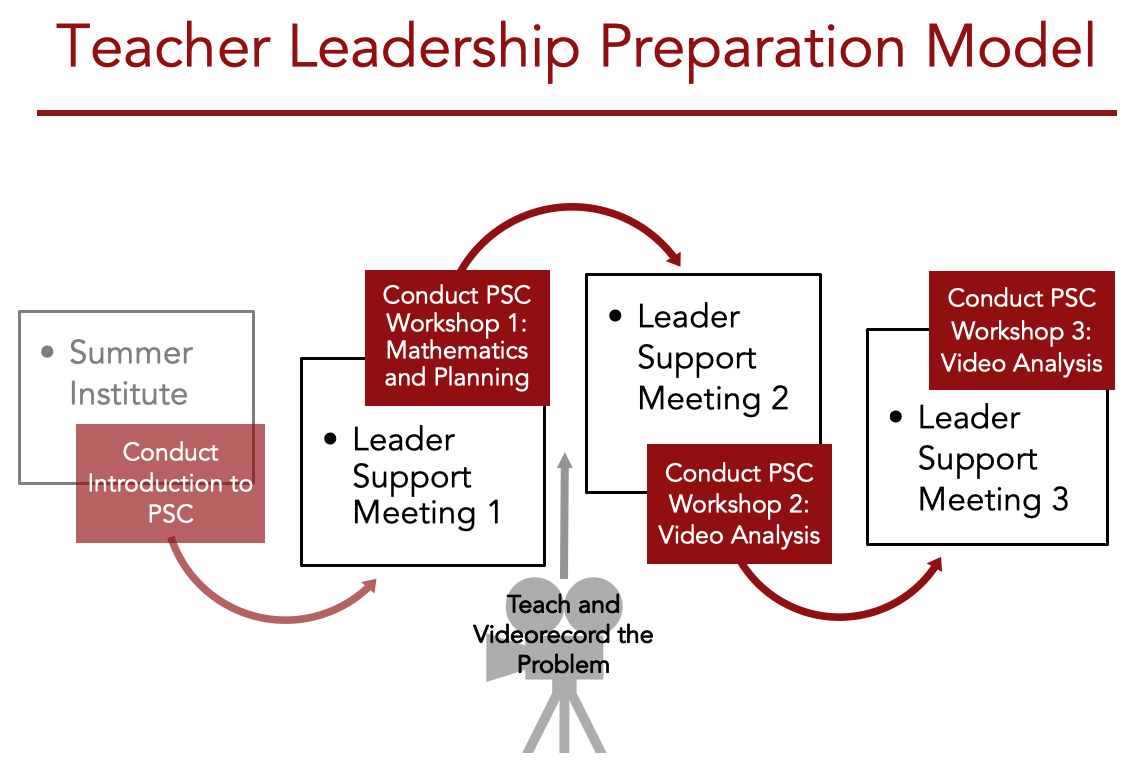Problem-Solving Cycle and Teacher Leadership Preparation
The Problem-Solving Cycle model and the Teacher Leadership Preparation model are part of a research-practice partnership to increase district capacity.

Introduction
All across the United States, mathematics teachers are being asked to implement new curriculum, interact with their students in different ways, and have a much deeper knowledge of mathematics content than ever before. The key is to professionalize the field of math teaching. We posit that teachers should be treated as professionals and, as such, have access to sustainable, long-term opportunities to expand and share their knowledge.
The Problem-Solving Cycle (PSC) model presents one such opportunity. When teachers participate in this highly adaptable model, they become part of a professional learning community. This community engages in mathematical problem solving, examines video of classroom teaching, and shares ideas about teaching and learning mathematics. By electing to take part in the PSC, teachers demonstrate their commitment to broadening their knowledge base and, consequently, to becoming better able to support their students’ learning of mathematics.
"After 20 years of teaching, it (PSC) has given me fresh eyes, like I’m a brand new teacher. The lens of the questions that I want to ask of my students and how they learn and why they’re doing things the way they do--I wasn't thinking that way. Maybe once in a while, but now it’s almost a constant lens. It’s due to these amazing workshops and the ability to practice this stuff with our peers in a safe environment."
--PSC Teacher Leader
The Problem-Solving Cycle Facilitator's Guide explains each component of the cycle in more depth with examples, suggestions, and rationale. This guide is currently being finalized and will be made available shortly.
Principal Investigators and Leadership
Hilda Borko, PhD
Janet Carlson, PhD
Rebecca Deutscher, PhD
SFUSD Leaders

This work is supported by the National Science Foundation under Grant No DRL 1417261. Any opinions, findings, and conclusions or recommendations expressed in this material are those of the author(s) and do not necessarily reflect the views of the NSF.
